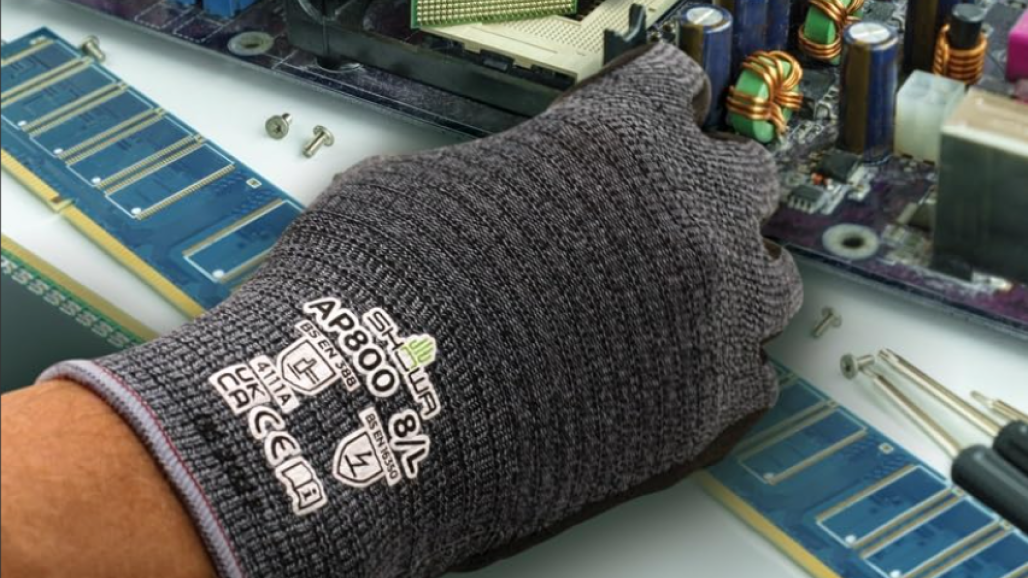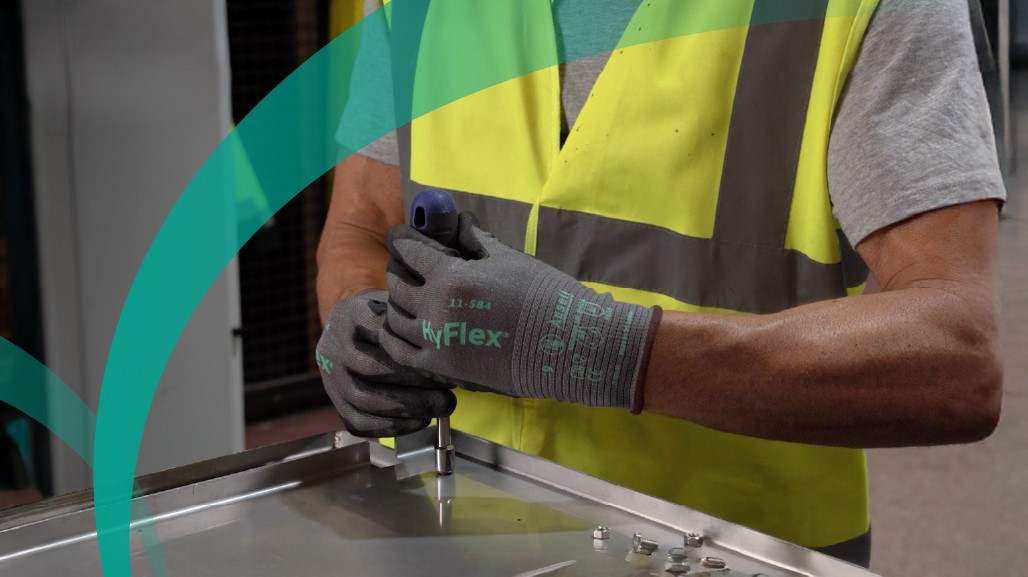Arm Protection: Why Sleeve Protectors Matter in Workplace Safety
Just as gloves protect workers’ hands from injuries like cuts, abrasions and burns, sleeve protectors shield workers’ arms.
Just as gloves protect workers’ hands from injuries like cuts, abrasions and burns, sleeve protectors shield workers’ arms.
Workers’ arms may be exposed to cuts when handling sharp materials, working around sharp edges or moving items.
Basic cut resistance is often provided by form-fitting tubular knit sleeves, but sleeves are also available to protect against heat or chemical burns.
Sleeves are a cost-effective option for personal protective equipment, and workers may be more likely to wear them than bulkier items.
When selecting sleeves, consider factors such as color, length and how they’ll stay up.
Workplace hazards don’t end at the wrist. Just like hands, arms can be at risk as well. Sleeve protectors matter.
Gloves protect workers’ hands from injuries like cuts, burns and abrasions, as well as injuries caused by impact and even vibration. Arms, though also in danger, may be left unprotected.
“Too often, we fail to consider that arms are vulnerable to many of the same hazards that cause workers to need gloves,” says M.B. Sutherland, a senior safety writer, citing National Safety Council statistics showing that arm injuries accounted for nearly 5 percent of injuries involving days away from work in 2017 (in comparison, hand-related accidents accounted for more than 13 percent of such injuries).
Personal protective gear for arms, in the form of safety sleeves, may help prevent some of those injuries.
“Often workers need to reach over or under machinery, shelving or other rough materials to complete a task. So while hands may be protected with gloves, arms without proper protection are vulnerable to cuts, abrasions and burns,” Sutherland writes in OH&S. “Routine tasks such as moving items in and out of bins can become hazardous if workers have to reach into barrels or other receptacles that contain sharp materials. Even the receptacles themselves can cause injury as bins become worn over time and may have sharp, uneven edges.”
John Mazur regional manager in the Northeast for Worldwide Protective, says cut-resistant sleeves are often used in automotive plants, where workers are reaching in and out of sharp-edged chassis, as well as at glass plants and metalworking plants.
“You may have stacks of sheet metal, people reaching around or over items in their work area, so you want to make sure that the arm is completely protected,” he says. Even workers cutting metal banding on pallets may benefit from protective sleeves. “When those get cut, there’s a lot of tension on them. A lot of times those bands will really rip back.”
Sleeve protectors can do more than protect against cuts, says Sutherland.
“Chemical splash, radiant heat and hot materials can easily injure arms if your workers have only shirt sleeves, which can also gap open between wrist and elbow, or no arm covering at all.”
Just like gloves, the material used to make sleeves varies depending on their intended use.
Mazur says at Worldwide, form-fitting, cut-resistant protective sleeves are made out of the same material as gloves, and the fabric is tested by the same ANSI standard that measures a glove’s cut resistance, ASTM F2992-15. The yarn for the fabric is woven into a tube, which can be cut to any length. Doubled over, it becomes a two-ply product. Some sleeve protectors use Kevlar as well which can work the same way when doubled over.
A variety of materials are used to make sleeves. Cut-resistant sleeves are often made with para-aramid. Some sleeves use wicking fabrics on the inside to help keep workers cool and dry. Two-ply sleeves can also be made to be heat-resistant.
“The single ply is good for keeping your arms cool or maybe providing some cut protection, but they really aren’t going to provide a lot of heat resistance,” Mazur says.
For workers who need a higher level of protection from burns, safety managers should consider cape sleeves, which have a blousier cut and use heavier materials.
Sleeves can also be puncture-resistant, and specially designed sleeves are available for welding, for protection from arc flash, and for tasks like food preparation.
Not sure what the best sleeves are for your workplace? Use this interactive product selector to help give you the best options.
Are sleeves the best option for your facility? Mazur says a facility’s safety manager will be the best judge.
“They know where their recordables are,” says Mazur. “If they have a lot of wrist injuries or forearm injuries or biceps, upper arms, but they aren’t having any injuries in the body area, you can get away with wearing just a sleeve.”
Another factor to consider is cost. There are a variety of personal protective equipment (PPE) options to consider—in addition to sleeves, there are jackets, aprons, chaps and other protective items.
“A pair of cut-resistant sleeves is a fraction of the cost of an average cut-resistant shirt or jacket,” says Sutherland. “If the hazard extends only to a worker’s elbow or shoulder, it’s possible you can save money and increase comfort and compliance with a simple pair of sleeves.”
Compliance—ensuring workers use the PPE recommended for a task—is another issue. Sleeves may be more comfortable than other PPE options, but that doesn’t mean workers will always be willing to wear them.
Mazur says clients sometimes request sleeves that are made as an extension of a glove, so workers wearing one have to wear the other. He advises against this.
“The problem is the glove will wear out much faster than the sleeve will,” he says. “Then you have to throw out the whole thing—you’re throwing out the sleeve and the glove versus just replacing the glove.”
When selecting sleeves, Mazur says there are a wide variety of features to consider, including:
Mazur says workers often throw out or refuse to wear sleeves that look dirty, so choosing a color that hides the dirt may help reduce the number of sleeves a plant needs.
Woven sleeves come in custom lengths.
How do woven sleeves stay up? Are they attached to a worker’s sleeve with a clip? Tightened on the arm with a Velcro strap? Or held on with an elastic band?
Thumbholes at the bottom end of a sleeve help keep a sleeve in place under gloves.
“So if you’re reaching outward and hit the corner of sheet metal or glass, you don’t want it to be able to run up under that sleeve,” Mazur says. This feature can also provide added protection for palms, he says, where a lot of cuts occur.
How do you use sleeve protectors in your facility?
General industry standards from the Occupational Safety and Health Administration do not include requirements specifically mentioning protective sleeves. However, their use would be covered under the general duty clause.
“If a workplace hazard assessment reveals that employees face potential injury to hands and arms that cannot be eliminated through engineering and work practice controls, employers must ensure that employees wear appropriate protection,” OSHA states in its publication, Personal Protective Equipment. “Protective equipment includes gloves, finger guards and arm coverings or elbow-length gloves.”
Sleeves are mentioned specifically in the special industries standard for electric power generation, transmission and distribution (29 CFR 1910.269). The standard states that insulating sleeves must be worn if the upper arms or shoulders are within the minimum approach distance to exposed energized parts.
In OH&S, senior safety writer M.B. Sutherland says in some cases—particularly around power rotating equipment—sleeves may become a hazard.
“Any rules that apply to clothing your workers might wear also should apply to sleeves,” she says. “Be sure to consult OSHA and company regulations before adding or subtracting any type of PPE on a job.”




